For anyone visiting Barcelona, whether for the first time or returning for another visit, you might want to expand your horizons past the traditional touristy “must-dos.” While Gaudi’s architectural masterpieces and the bustling streets of La Rambla are undoubtedly popular, Barcelona has a treasure trove of alternative experiences waiting for you to uncover! I was lucky enough to spend a large part of my summer in Barcelona this year and think I’ve undercovered the best Alternative things to do in Barcelona that are still very tourist-friendly. All these activities are a great way to level up your time in the capital of Catalonia!

- Admire the View at the Bunkers del Carmel
- Explore the Trendy Gracia Neighborhood
- Tour Casa Vicens, Gaudi's First Masterpiece
- Discover Hidden Secrets inside the Cementiri del Poblenou
- Go on a Pintxos Crawl in Poble-Sec
- A Feast for the Eyes (and the Mouth) at the Mercat de Sant Antoni
- Admire the Lush Gardens on a Hike up Montjuïc Hill
- Uncover Spain's Funerary Rituals inside the Museum of Funeral Carriages
- Marvel at Modernisme inside the Sant Pau Art Nouveau Site
- Find Peace inside the Monastery of Pedralbes

Admire the View at the Bunkers del Carmel
Although the Bunkers del Carmel is definitely not a “hidden gem” anymore, its location far north of the touristy centre still makes a trip to the Bunkers del Carmel a unique experience. The Bunkers del Carmel, also known as Turó de la Rovira, was a former anti-aircraft battery from the Spanish Civil War. But after the war, the area was abandoned and taken over by graffiti artists and the rocks are all covered in vibrant street art.

But what really makes this area so popular for tourists is the breathtaking panoramic views of the city. From the top of the bunkers, you have an incredible elevated vantage point over the entire cityscape of Barcelona. From here, you can truly admire the awe-inspiring height and splendour of the Sagrada Família.
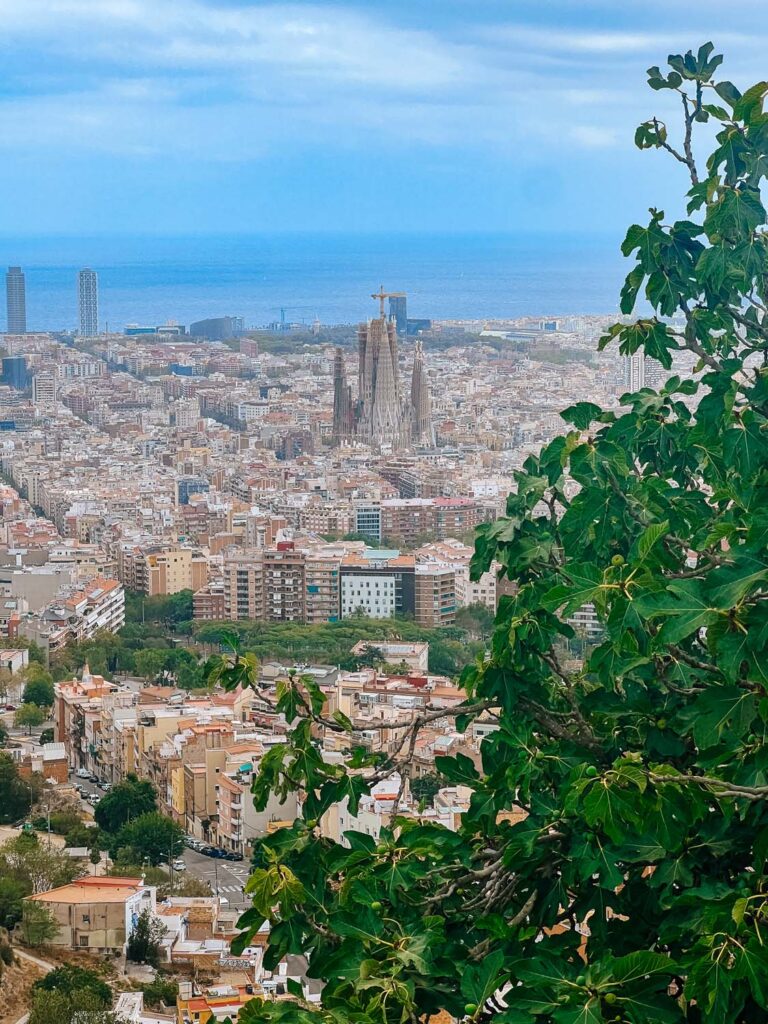

Despite its increasing popularity, Bunkers del Carmel maintains a relatively peaceful and laid-back atmosphere. Grab some snacks and a bottle of wine, and let the colours of the skyline and waterfront amaze you. Starting May 2nd, 2023, the bunkers close at 7:30 p.m. during the summer and 5:30 p.m. in the winter. So, this is no longer the best sunset spot in the city. Keep that in mind.

Explore the Trendy Gracia Neighborhood
The Gràcia neighbourhood in Barcelona is a charming and bohemian enclave known for its artistic spirit, lively atmosphere, and strong sense of community. Stroll through the colourful streets and immerse yourself in its multicultural charm. This neighbourhood is a captivating blend of cultures, art, food, vintage shops, and countless hidden gems. You’ll find everything from cool boutiques to tucked-away art galleries, making it perfect for the curious traveller seeking authentic local vibes.

The heart of the neighbourhood can be found in the Plaça de la Vila de Gràcia. This square is a bustling hub where locals and visitors converge. It features a lovely clock tower and a variety of restaurants, cafes, and shops. It’s a perfect spot for people-watching and enjoying a meal or a drink. Hit up News & Coffee for your morning brew if you come early. For some vermuth and tapas, stop in at Nou Candanchú.


Festa Major de Gràcia
Gràcia is famous for its annual neighbourhood festival, Festa Major de Gràcia, held in August. During this time, streets in the neighbourhood are adorned with imaginative and artistic decorations, and there are numerous cultural events, concerts, and activities to enjoy. You CANNOT miss this event if you’re in town during the festival.


Tour Casa Vicens, Gaudi’s First Masterpiece
Antoni Gaudí, the iconic Catalan architect, left an indelible mark on Barcelona. But his unique and imaginative architectural creations all started here at the Casa Vicens, his earliest and most extraordinary works. Most people who come to Barcelona see his penultimate work, the Sagrada Familia. But if, on the other hand, you tour his very first commission, you’ll get to see where his true genius was first unveiled.

Casa Vicens was originally built as a summer residence for Manuel Vicens i Montaner in 1885. Casa Vicens is a testament to Gaudí’s avant-garde vision and his ability to blend various architectural styles into a harmonious and visually stunning masterpiece, including Moorish, Gothic, and Art Nouveau. Every corner of Casa Vicens is adorned with meticulous attention to detail. From the ceramic tiles on the exterior to the intricately designed interiors, Gaudí’s artistic touch is evident throughout the building. Each room is a masterpiece, showcasing his fascination with natural forms and geometrical patterns.
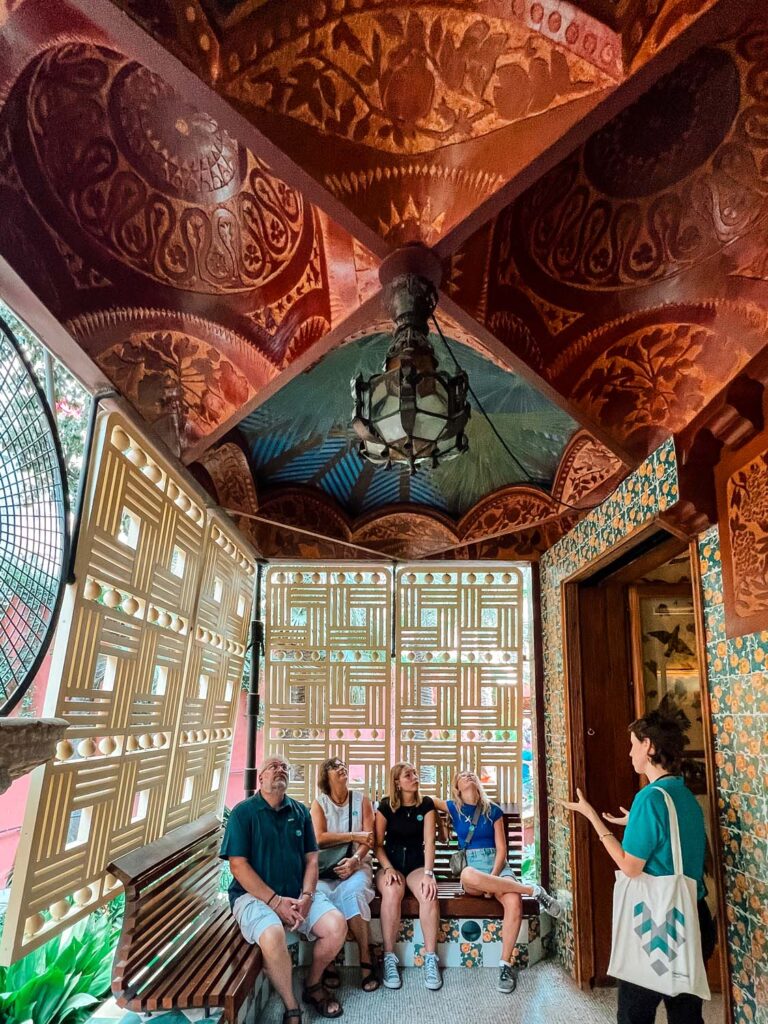


While many of Gaudí’s other works in Barcelona draw large crowds, Casa Vicens offers a more intimate and personal experience. It’s a chance to appreciate Gaudí’s genius without the bustling tourist masses.

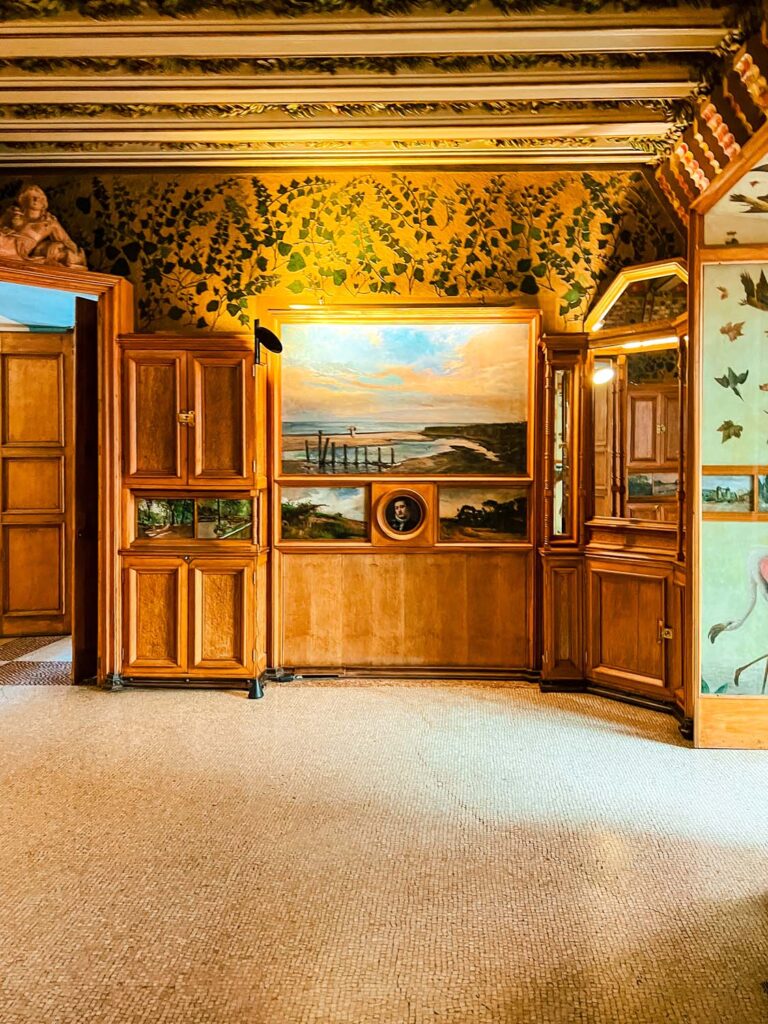

Discover Hidden Secrets inside the Cementiri del Poblenou
Tucked away in the Poblenou neighbourhood lies a hidden gem that often escapes the radar of mainstream tourism—the Cementiri del Poblenou, or Poblenou Cemetery. While visiting a cemetery might seem rather morbid, I always argue that cemeteries are such a wonderful historical fingerprint. As often, cemeteries tell us so much about the living when the residents were interred. Far from being just a burial ground, this cemetery is a testament to Barcelona’s rich history, artistry, and the deep reverence the city holds for its departed souls.

Walking through the cemetery feels like strolling through an open-air museum. Elaborate and artistic tombs and mausoleums line the pathways, each telling a unique story about the individuals or families they commemorate. Intricate sculptures, delicate stonework, and beautiful mosaics adorn many graves.

Unlike some of Barcelona’s more crowded attractions, the Cementiri del Poblenou offers a serene and contemplative atmosphere. It’s a place for quiet reflection, where you can escape the hustle and bustle of the city and find a sense of peace among the tombstones.


Go on a Pintxos Crawl in Poble-Sec
Dining on some Spanish tapas is one of the reasons many people come to Barcelona. Tapas encompasses many small dishes, including olives, cheese, chorizo, calamari, croquettes, patatas bravas and more. But one type of tapas that is unique is called pintxos. The term “pincho” comes from the Spanish verb “pinchar,” which means “to pierce” or “to stab.” This refers to skewering the ingredients onto a toothpick or small piece of bread, which serves as a base to hold the ingredients together.

Pinchos are known for their artful and creative presentation. They are often displayed on the bar counter, and customers can choose the ones they want to enjoy. Common pinchos ingredients include cured meats (like chorizo or jamón), cheeses, olives, seafood (such as shrimp or anchovies), vegetables, and sometimes even small portions of hot dishes like tortilla española (Spanish omelette).


Since pinchos are so small, one of the most popular ways to eat them is hopping from bar to bar, trying out their unique creations along with a small beer or vermuth, and heading on to the next one. Career de Blai, a street in the Poble-Sec neighbourhood, is a hub of pinchos bars. Try Pincho.j, Blai 9, Koska Taberna or Blai Stop to try some pinchos for yourself!
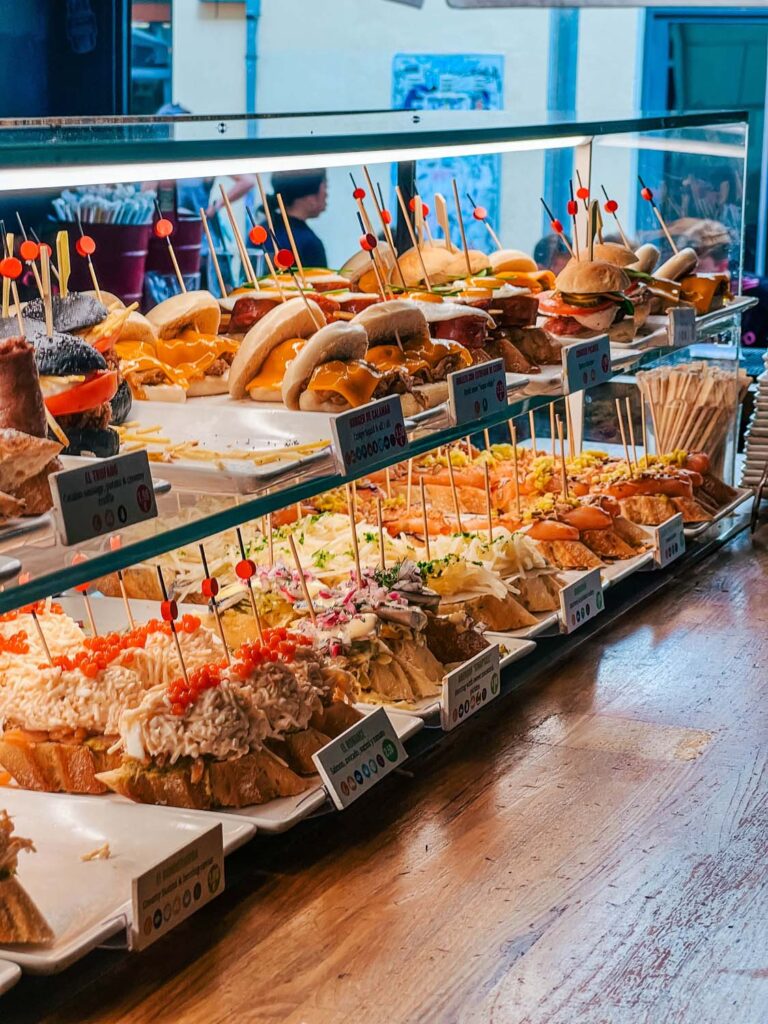

A Feast for the Eyes (and the Mouth) at the Mercat de Sant Antoni
While the most popular tourist market in Barcelona is the Mercat de la Boqueria on La Rambla, if you’re looking for a market that is just as bustling but perhaps a little more off the tourist track, head to Mercat de Sant Antoni. Although a few locals might still shop at the Mercat de la Boqueria, few are willing to fight past the tourists. So, if you’re looking to shop where the locals shop, come here!

Nestled in the vibrant neighbourhood of Sant Antoni, the Mercat de Sant Antoni offers a sensory explosion of colours, flavours, and aromas. This historic market, recently restored to its former glory, has been open since 1882. The market’s modernist architecture is a sight to behold. The building’s iron structure, stained glass windows, and ornate details are a testament to the architectural brilliance of the time.
The market is a treasure trove of culinary delights. You’ll find many fresh produce, meats, seafood, cheeses, and a kaleidoscope of fruits and vegetables. Beyond the traditional market stalls, Mercat de Sant Antoni also hosts several Bar Cafeterias where you can sit at the counter and sample tapas, seafood, and local specialties. It’s the perfect place to indulge in Catalan cuisine and taste authentic flavours.



Sunday Book Market
If you’re lucky enough to come on a Sunday, you’ll find the market surrounded by a series of popup tents. Underneath hides a bustling secondhand book market. Book lovers can browse through stacks of vintage books, magazines, and collectibles, adding a literary touch to the market experience.


Admire the Lush Gardens on a Hike up Montjuïc Hill
For a touch of history and nature, consider a hike up Montjuïc Hill. Now, be aware that Barcelona can get very hot in the summer, so you’ll want to do this hike early in the day or after the sun goes down in those hot and humid summer months. While I call this a “hike,” I think it would merely be considered an uphill walk for many, but this just means it is an achievable endeavour for all fitness levels.
Montjuïc Hill, often called the “Jewel of Barcelona,” overlooks the city and the vast Mediterranean Sea. The best place to start the walk is the Jardines del Teatre Grec in the Poble-Sec neighbourhood. Continue along the path towards the Miró Foundation. You can walk through a series of Barcelona’s finest beautifully landscaped gardens!

Montjuïc Castle
Go through the Jardins de Joan Brossa towards the Jardins del Mirador. Each little vignette features a variety of plants, sculptures, and fountains. You have an incredible look out over the city from the Jardins del Mirador. Then, you make your way west along the pathway towards Montjuïc Castle. This historic fortress dates back to the 17th century. It was initially built as a military stronghold and has served as a prison at various historical points.

For a scenic ride back down the mountain, take the Montjuïc Cable Car. This aerial tramway connects the hill to the Barcelona waterfront. You can take in some breathtaking views of the city, the sea, and the hill as you look back towards it. It’s a nice relaxing reward after an afternoon of exercise.

Uncover Spain’s Funerary Rituals inside the Museum of Funeral Carriages
The Museu de Carrosses Fúnebres (Museum of Funeral Carriages) is one of the most unconventional museum in Barcelona! The Museu de Carrosses Fúnebres provides a unique and thought-provoking glimpse into the city’s funerary history. You will walk through the evolution of funeral customs over the centuries. It’s a place where visitors can gain a deeper understanding of the cultural and social aspects of Barcelona’s past. And explore an aspect of history that is often overlooked but undeniably significant.
The museum houses a collection of historic funeral carriages and hearses in Barcelona and the surrounding region. These carriages, some of which date back to the 18th and 19th centuries, are beautifully preserved. The carriages on display are often works of art in their own right. They feature intricate details, ornate decorations, and craftsmanship that reflect the artistic styles of their respective eras. I truly wish we still had this beautiful carriage at funerals today! What a beautiful way to honour the dead.
Marvel at Modernisme inside the Sant Pau Art Nouveau Site
The Sant Pau Art Nouveau Site, also known as the Recinte Modernista de Sant Pau, was my absolute favourite thing I saw the first time I came to Barcelona. And I’ve spent the last five years encouraging every single person I know to make their way there! The Sant Pau Art Nouveau Site was designed by architect Lluís Domènech i Montaner. And today it is considered a masterpiece of Catalan Modernism. Originally built for the Hospital de la Santa Creu i Sant Pau in 1930, the design of the complex was meant to make patients feel at peace in this beautiful, uplifting and serene environment. While also being surrounded by state-of-the-art medical care. It was the first of its kind and remains a unique concept for medical care facilities.

The complex is adorned with exquisite Art Nouveau details, including intricate mosaics, stained glass windows, colourful ceramics, and sculpted figures. Curved lines and decorative elements cover every surface, a departure from traditional architectural styles.
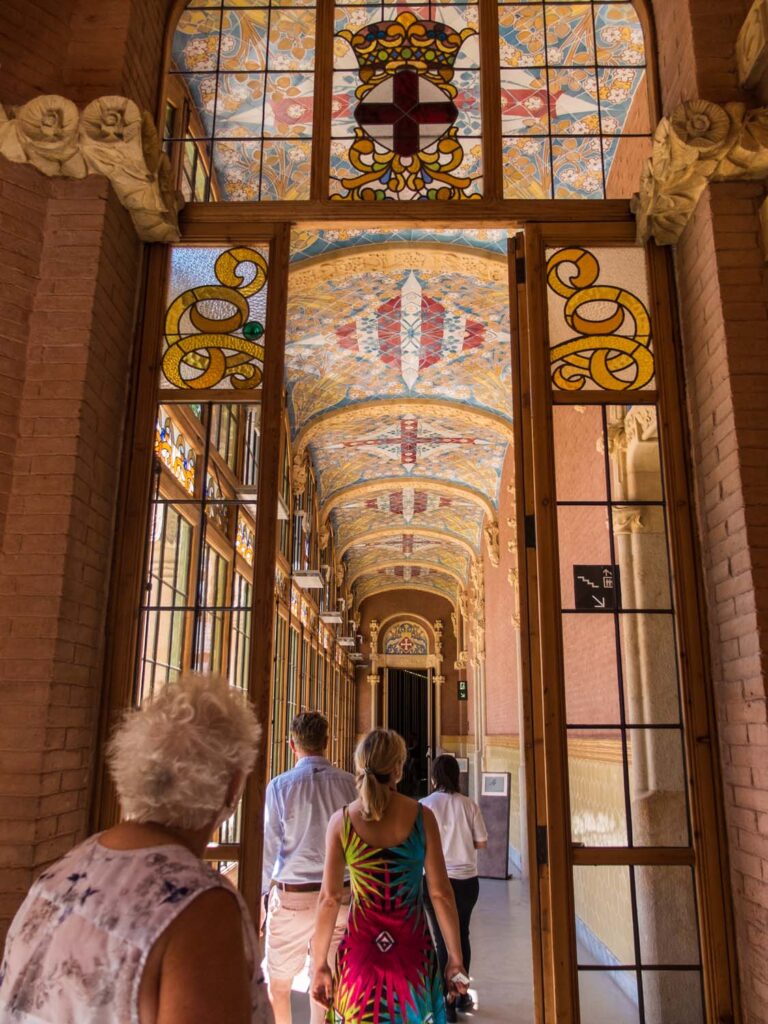
The complex’s architecture incorporates various themes and symbols, such as floral motifs, religious symbolism, and references to nature. Each pavilion and building within the site has its own unique character and design, contributing to the overall grandeur of the complex. This place is not to be missed, but time and time again, I see people overlooking this spot in favour of the nearby Park Guell or less impressive Gaudi residences. Trust me, this one is well worth your time and money.



Find Peace inside the Monastery of Pedralbes
The Monastery of Pedralbes is hidden in Barcelona’s residential Les Corts neighbourhood. Even in the dense tourist summer months, when I visited the monastery, it felt like I was the only one there. There were probably a few dozen people in reality, but it is such a grand place that you always had parts of it to yourself!

The Monastery of Pedralbes was built between 1294 and 1326! And yet, it had been so magnificently preserved that in no way does it feel like it could be that old but in that great shape. The building is an outstanding example of the Catalan Gothic style, characterized by its graceful arches, pointed vaults, and intricate stonework.



The monastery was founded by Queen Elisenda de Montcada in 1326 as a place for the Order of Saint Clare, also known as the Poor Clares. When Queen Elisenda commissioned the monastery, she also had a small palace built nearby as her husband was in failing health, and she wanted a place to live after she became a widow. One of her favourite places to come, pray and even perhaps live was the serene monastery courtyard and gardens. The courtyard features a picturesque central fountain, surrounded by medicinal plants that were used to help treat many illnesses in medieval times.

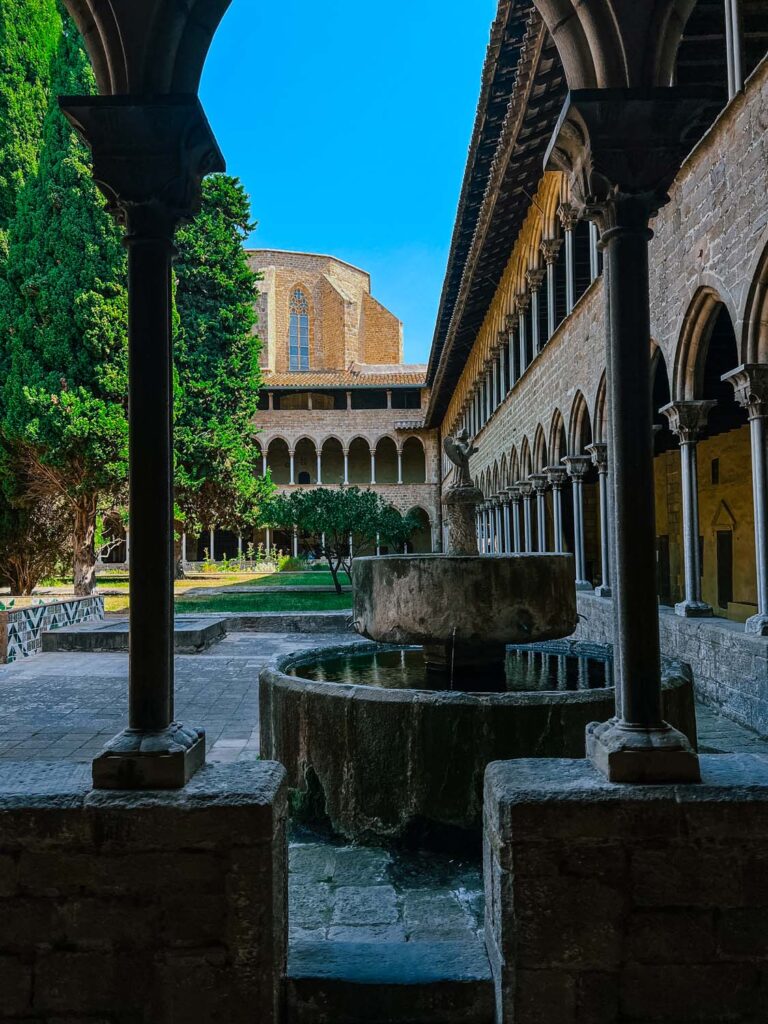
Hopefully, these less frequented experiences allow you to sere a different side of the city! Venture off the beaten path, explore the city’s lesser-known wonders, and make unforgettable memories. Barcelona’s alternative charms are waiting to be uncovered, so what are you waiting for? ¡Vamos!













1 COMMENT
David Thompson
10 months agoIf you are looking for alternative experiences, I might have a good option!
Last year I visited Barcelona (again) and decided I wanted to do something different so I booked a tour that included three different forms of transport, starting with a e-bike, then a cable car ending on a cruise.
I have to say it was pretty different but exceeded all my expectations!
It was a great experience and I recommend it a 100%.
David